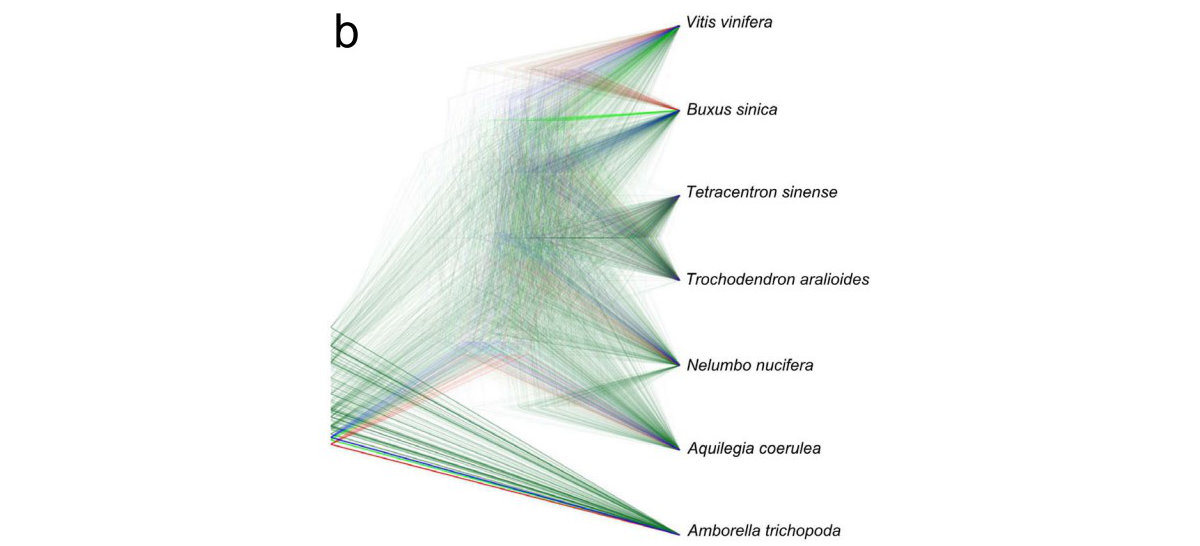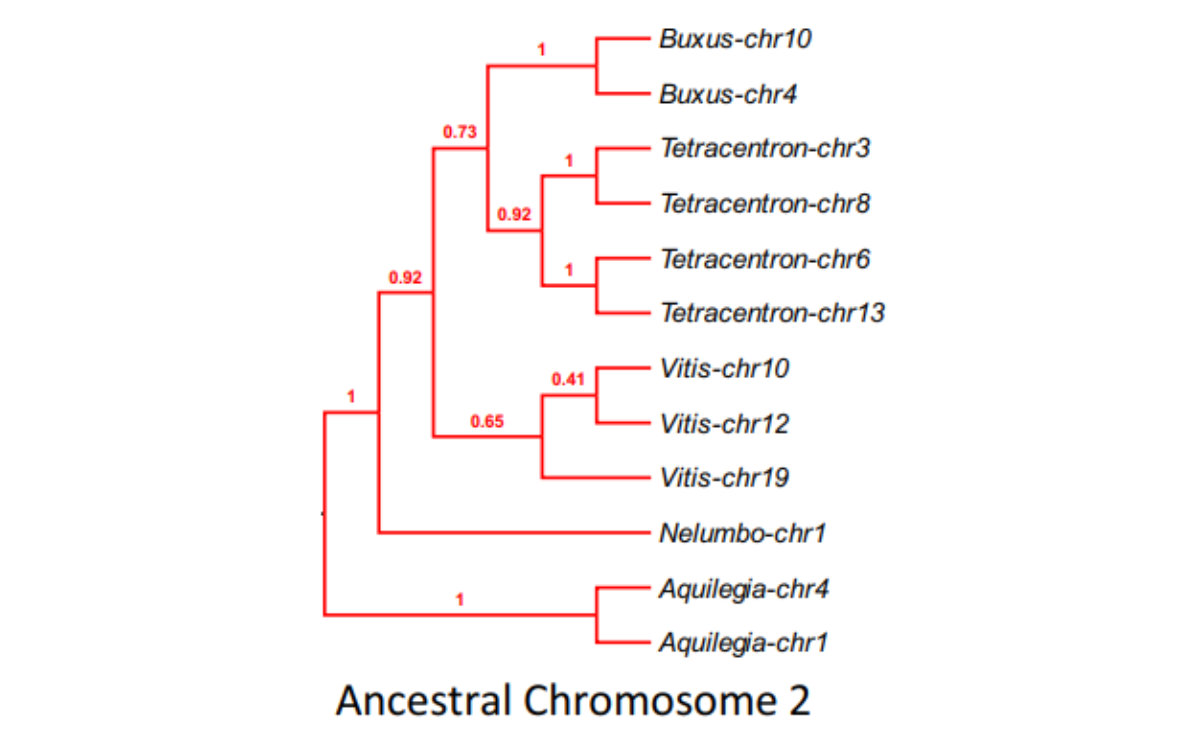Inaugural address of creationist biology professor
I have just watched the “inaugural address” of Richard Buggs, a biology professor at Queen Mary University of London. According to Jerry Coyne, Prof. Buggs is “A creationist professor of evolutionary biology in England.” Professor Buggs’s lecture was entitled “Trees of life: Do they exist?” The trees in question are those tall, leafy things that we like to lie under, the Darwinian tree of life, and the Biblical tree of life.
Professor Buggs is amiable, and the lecture was very clear and easy to follow. He uses this figure by Andre S. Chanderbali and colleagues to suggest that evolutionary trees do not really exist:

To my untutored eye, the figure, called a cloudogram, looks like an evolutionary tree with a great deal of noise, but that is probably no more than an artifact of my background in error analysis. The paper in which it appears is largely unintelligible to me, but it is clear that the authors were not aghast when they saw the figure and did not think that it posed any problems for evolution. A pen pal informs me that the figure combines nonoverlapping trees from a number of species representing groups with different histories, so presumably no conclusion about evolution may be drawn. Indeed, my pen pal adds, “actually some very good phylogenetic trees of chromosomes are in the same paper, and those are the important ones the authors refer to,” for example:

Twenty-odd minutes in, Prof. Buggs comes very close to suggesting that angiosperms – flowering plants – have no common ancestor, from which we are left to infer that they were created de novo. According to Wikipedia, the origin of angiosperms is “contentious,” but that is no reason to hint at a God-of-the-gaps argument. With apologies to whoever wrote the original, I immediately thought
How odd
Of God
To tease
With trees.
Late in the lecture, around 53 min, Prof. Buggs notes some miracles supposedly performed by Jesus of Nazareth and catalogued in the Book of Revelation. He argues that the miracles must be veridical, or Christianity would not have spread so wildly. Such a claim, if not disingenuous, is at least wholly inconsistent with the wild spreading of disinformation in our era or of “heresies” in earlier eras.
I will not go into detail, but Prof. Buggs suggests that the Christians on the western Turkish coast must have verified the miracles by talking to witnesses. I do not mean to be catty, but I am afraid they could not exactly have hopped on their donkeys and flown to Jerusalem to search for witnesses. In an earlier article, Francis Collins and the god of the gaps, I noted that Dr. Collins seemed very credulous when it came to his religious beliefs. Professor Buggs is in good company and comes across as at least equally credulous and perhaps less than critical in his thinking.
But watch the video for yourself and let us know your opinion in the comments.
